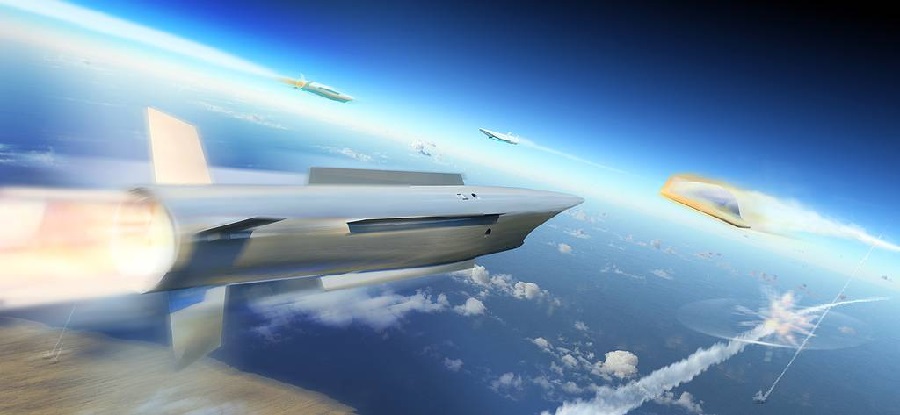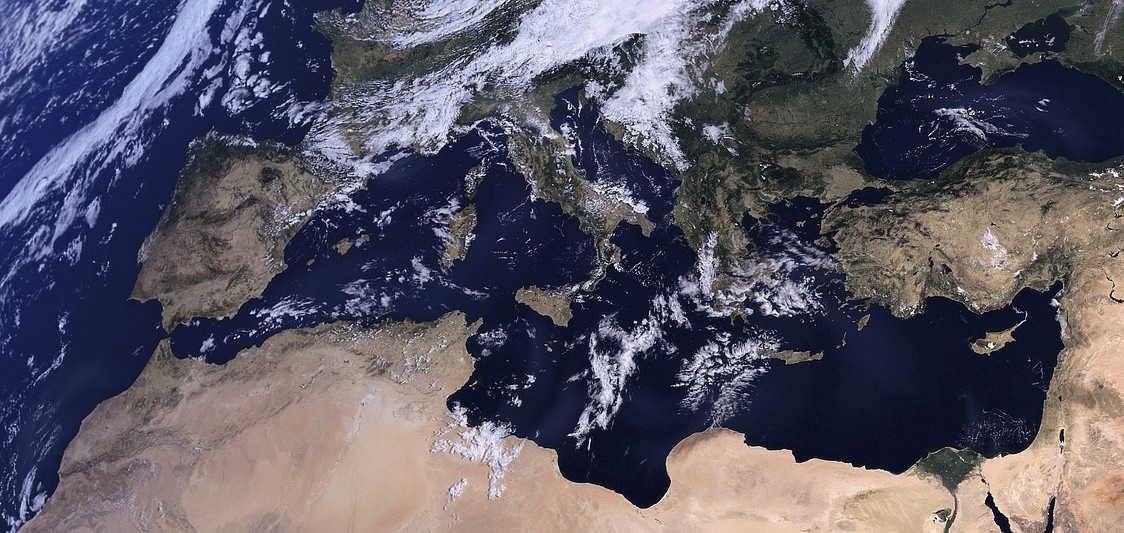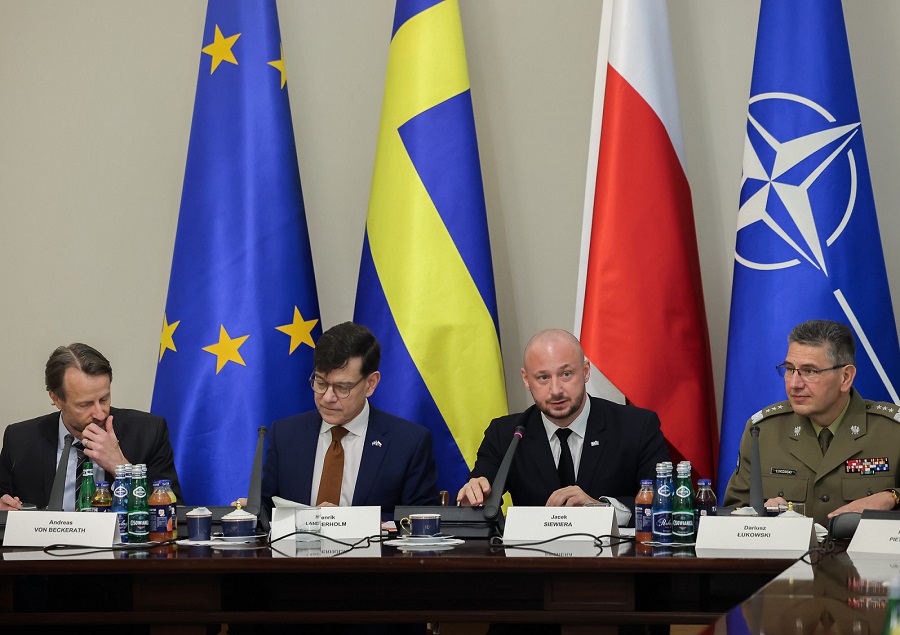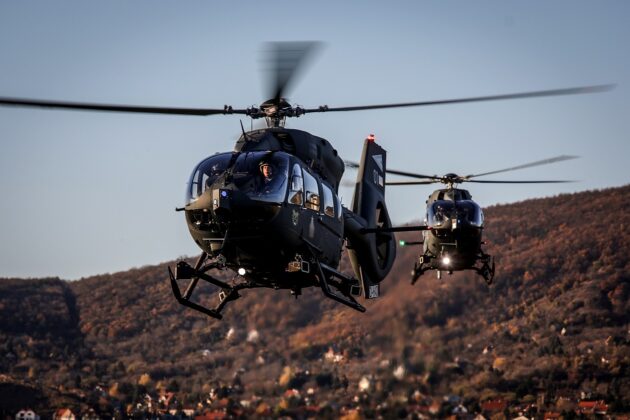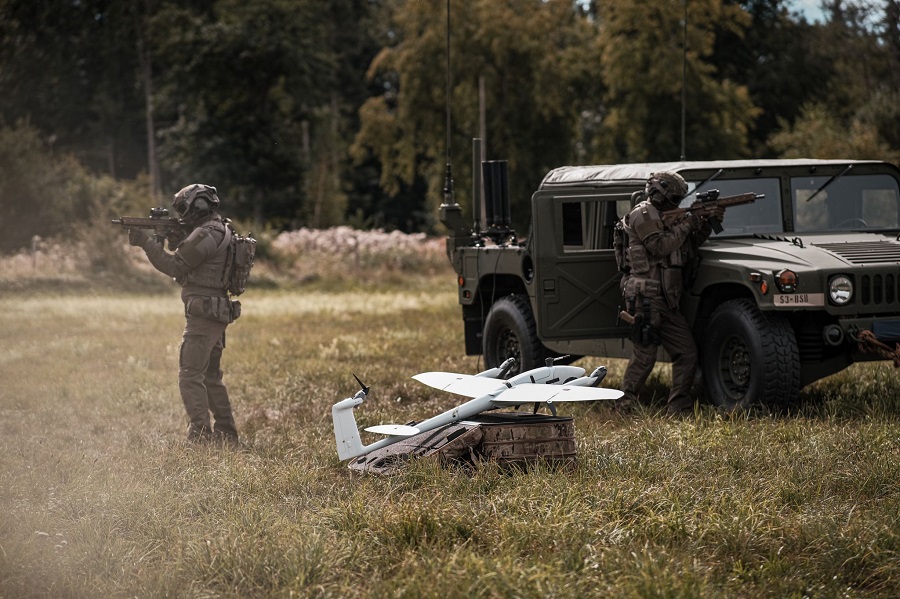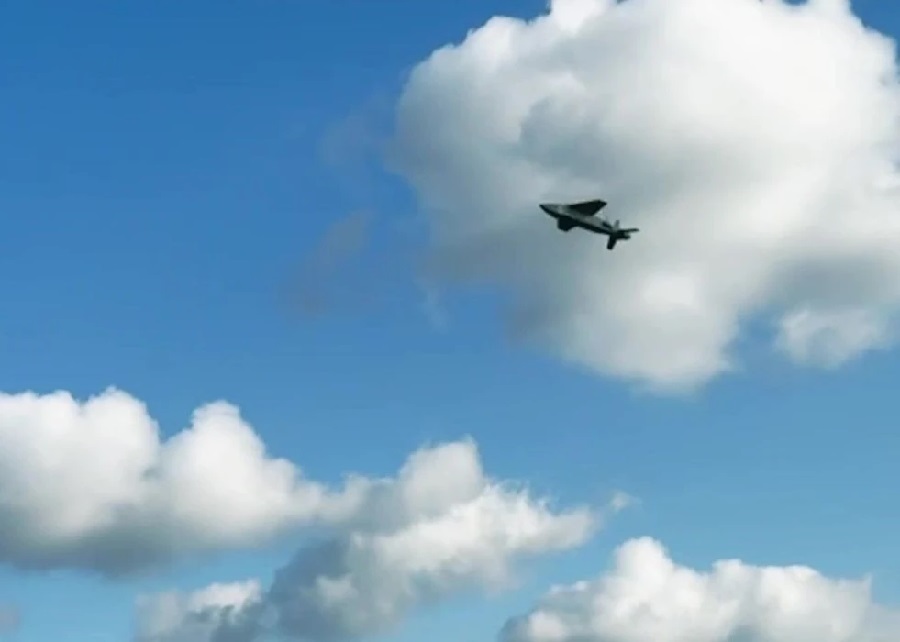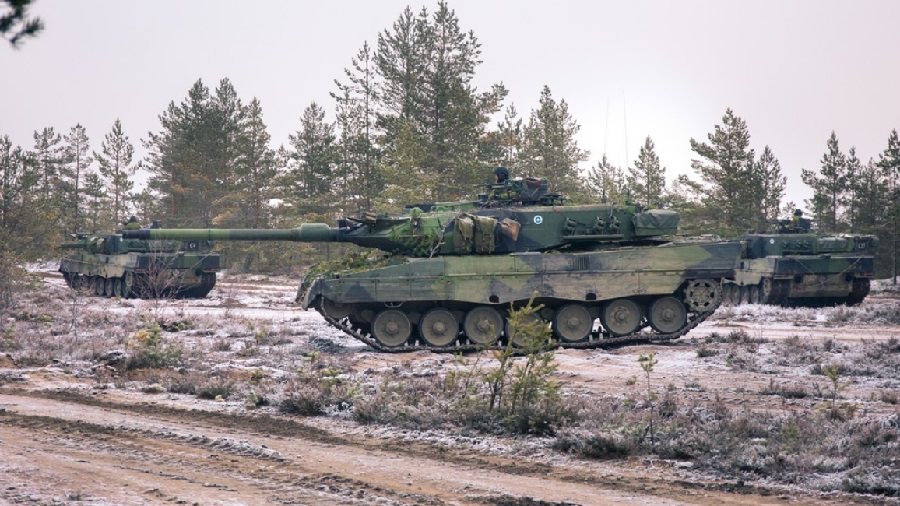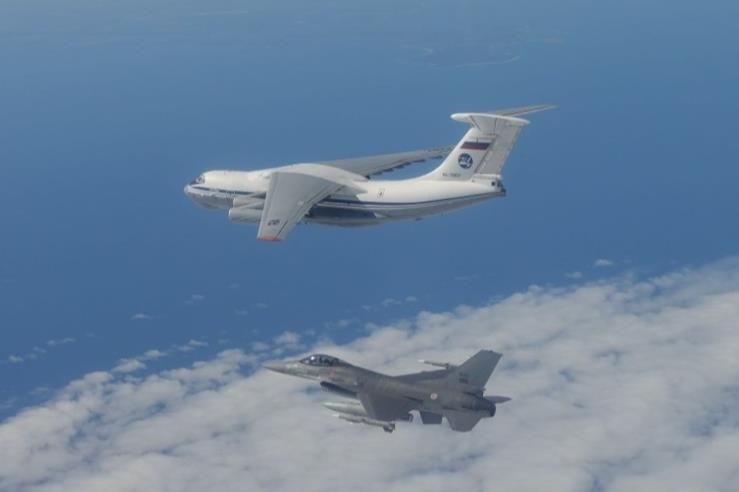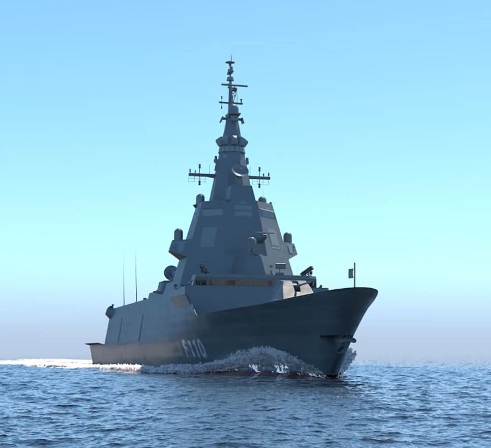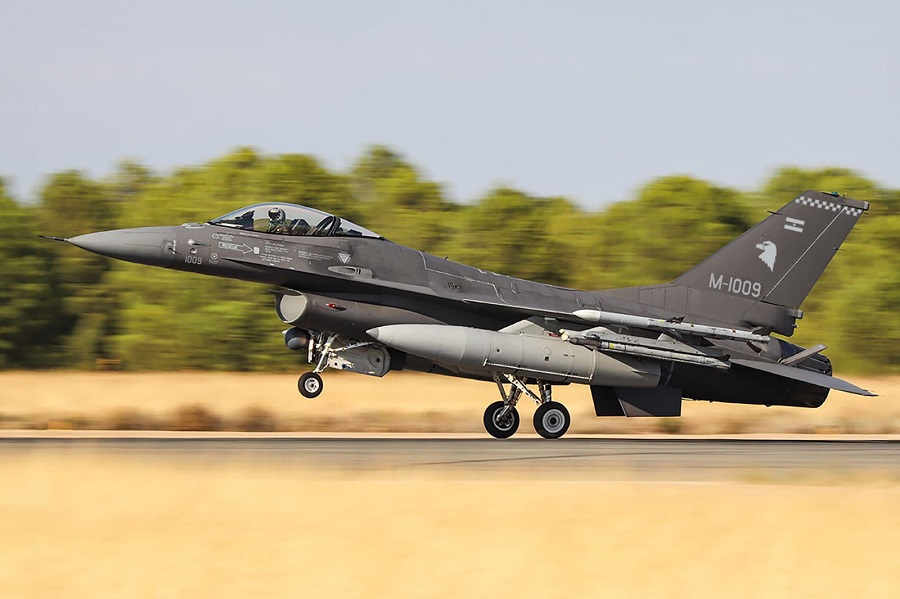Introduction: from “Defence Matters” to the Declaration of Versailles
The European Union (EU) has renewed its interests in European security and defence during the past decade. More recently, because of the return of war in Europe after the Russian invasion of Ukraine, the EU has emphasised that solidarity, unity, and determination, are vital for a stronger Union. However, this is not enough in today’s fields of security and defence, where technology, research, and innovation are the major drivers behind strong, effective, and efficient actors in the international military arena. It is unthinkable to achieve the goal of EU-SA without higher collective spending on innovation and a greater role of technology in defence policies. The Versailles Declaration, signed by EU leaders during an informal European Council meeting on 10-11 March 2022, can be considered the most recent cornerstone of the relationship between technology and strategic autonomy. EU countries pledged to “take more responsibility for the Union’s security” (EPRS Briefing, 2022) and heighten investments in defence know-how. A major focus was given to raw materials and semiconductors as the sectors where the EU will reduce its foreign dependence while building a stronger strategic European sovereignty. Roberta Metsola, President of the European Parliament, echoed EU leaders and underscored the seriousness of taking steps toward a more resilient security and defence policy through extended use of the EU budget (EPRS Briefing, 2022).
The EDTIB is not a new concept in the EU agenda and targets the formation of an industrial base that the Union can use for technological advancement and political purposes, such as EU-SA. To be a credible, trustworthy, and effective partner in defence and security, the Union must not only be able to make autonomous decisions in these fields, but it must possess, in primis, the advanced military capabilities that would allow it to thrive as an autonomous defence and technological actor. Nonetheless, economically speaking, the decline or constantly low defence investments across the Member States, the foreign dependence on military capabilities, the rising costs of per-state military production followed by the mounting quantities of defence duplicates in a fragmented EU market, and the lack of a coherent common culture between the Member States are all signs of inhibitions that are preventing the Union from realising its old goal of becoming a strategic autonomous actor in global defence and security. Therefore, if a solid EDTIB is a must for EU-SA, as will be shown in this paper, it is crucial to comprehend how the Union can overcome specific issues at its roots.
The European Strategic Autonomy:
The concept of EU-SA goes back to the 1998 British-French St Malo declaration[1], when the term was used for the first time to highlight the necessity for the EU to have an autonomous decisionmaking process supported by effective and reliable military forces in response to international crises (Franco–British St. Malo Declaration of December 1998, 2015). Nowadays, there is still some ambiguity around the notion of EU-SA, as there is no precise definition of such a concept. In the 2013 European Council conclusions on EU Common Security and Defence Policy (CSDP), strategic autonomy was expressed as the capacity to act with partners and the Member States through a strong European defence technological and industrial base. However, if one reads carefully, the use of “autonomy” and “partners” in the same sentence appears to be oxymoronic, which can cause a certain level of confusion to the reader. Similarly, the 2016 EU Global Strategy (EUGS) supervised by the former EU High Representative/Vice-President (HR/VP) Federica Mogherini, only mentioned EUSA four times, without actually explaining it. To quote the EUGS, “An appropriate level of ambition and strategic autonomy is important for Europe’s ability to promote peace and security within and beyond its borders” (Shared Vision, Common Action: A Stronger Europe a Global Strategy for the European Union’s Foreign and Security Policy, 2016). Once again, perplexities have been raised by the words “appropriate level of strategic autonomy”, (ibidem) as it alludes to different degrees of EUSA without being specific. In addition, the more recent 2022 Strategic Compass cites the term only once: “This Strategic Compass will enhance the EU’s strategic autonomy and its ability to work with partners […]” (A strategic compass for security and defence, 2022), generating the same oxymoron as for the 2013 European Council conclusions on EU CSDP. For this paper, “strategic autonomy” will be considered to signify the capacity of the EU to independently act in the strategic field of security and defence. Looking at the roots of the term, it derives from the Greek words “auto”, or self, and “nomos”, or law, and can be translated as a “freedom to use its laws, or independence.”
The approach of strategic autonomy can be imagined as a duality. On the one hand, there is a political component, for which all the EU Member States should adopt common budgetary lines concerning defence and security expenditures to overcome per-state waste of money and duplicates of military capabilities, as will be explained more in detail in the next sections. On the other hand, there is an industrial component intrinsically linked to the need for a stronger and less fragmented EDTIB. The EU-SA notion does not only concern a duality of variables, but also seeks to holistically explain how the Union can transform itself from a soft and purely civilian suis generis international organization to a military superpower. To achieve such an objective, the EU must develop technologically advanced capacities that can compete with or against actors in the global arena.
The European Defence Technological and Industrial Base:
It was only in 2013, in the period of “defence matters”, that the concept of EDTIB was proposed once again inside the European arena. After not being properly exploited from 2007 to 2013, the first HR/VP, Catherine Ashton, indicated in 2013 that the EDTIB was the essential foundation for a successful CSDP. As the European defence market was already heavily fragmented and overloaded by duplicates, the New Deal for European Defence in 2014 set the principles for a more competitive EU defence sector through the use of EDTIB. Together with the 2016 EUGS, the Implementation Plan on Security and Defence (IPSD), the Coordinated Annual Review on Defence (CARD), the Commission’s White Paper on Defence in 2017 [2] , Horizon 2020, and the comprehensive defence package(s) for the EU implemented in the last five years – inter alia the Preparatory Action on Defence Research (PADR), the European Defence Industrial Development Programme (EDIDP), and the European Defence Fund (EDF) – it is clear that a strengthening of the EDTIB is imperative to obtain a certain degree of strategic autonomy. However, the “Europeanization” of security and defence-related research and innovation must come from the collaborative and extensive efforts of all Member States, as these areas are conventionally dominated by them and their intergovernmental interests. Although governments have usually subsidised research and development (R&D) national projects either alone or in collaboration with other states [3], these have either faced reductions or have stagnated over time.
The establishment of the Permanent Structured Cooperation (PESCO) [4] in December 2017, paved the way for a new Treaty-based framework for operational readiness through shared capability projects among 25 EU Member States, except for Denmark [5] and Malta. Particularly, PESCO is significant as it differs from intra-state projects for the legally binding nature of its commitment. In March 2022, the HR/VP Josep Borrell reiterated the importance of closer cooperation on defence based on the PESCO framework and the broader comprehensive defence package consisting of CARD, EDF, and the Strategic Compass. At the roots of the latter structures, there is a pledge to better coordination and higher investments to jointly produce the military capabilities that the EU needs and will need in the future. Once again, we see how vital it is to establish a concrete technological and industrial base for the EU to become a strategic autonomous player in the defence field. Nonetheless, even in PESCO, there is no project combining all the Member States simultaneously, thereby implying that EU countries have not yet gained a significant degree of complementarity that is required from EU-SA.
The National Sovereignty Constraints:
Through this analysis, one can undoubtedly uphold that the EDTIB is a necessary condition for the achievement of EU-SA. Without significant advancements in the field of research and technological innovation, the EU cannot aspire to become a credible military actor, nor to be a strategic autonomous player in defence. Notwithstanding, the EDTIB is still suffering from under-investment and critical security of supply, which jeopardise its correct development whilst consequently hampering the EU-SA notion. Most importantly, the evident lack of political willingness from the EU members is preventing them to join forces and actively collaborate to build a less fragmented EDTIB. In this way, the Member States use and abuse their national sovereignty powers to withhold information from other members, to not participate in mutual military projects, and to hamper other members’ interests, goals, and gains. EU members foster competition against each other as if they were not allies and jeopardise the Union from the inside through general practices of individuality. The most salient are:
1.The lack of concrete investments in research and innovation,
2.The inability of Member States to join forces and build common budgetary lines to spend more and better together with a collaborative military procurement,
3.The consequent burden-cost of duplicates of military capabilities, and
4.The lack of a coherent shared culture among the Member States.
Firstly, although there has been some progress and promises have been made between the EU and its members, there are still critical budget gaps regarding the research and innovation of the EDTIB. Whilst in 2020 Member States amounted to a record[1] of €2.5 billion to the department of Research and Technology (R&T), – or only 1.2% of total defence expenditure against 2% of what is spent by the Americans – this was only possible thanks to France and Germany, pioneers inside their borders of more than 90% of the increase (EDA Defence Data 2019-2020, 2022). This evident imbalance or free riding among the Member States, preferring to nationally allocate a small amount of money on defence rather than collectively decide on common budget lines and operational targets to diversify their investments. This is also the reason why Member States ended up not respecting the benchmark of 2% of total defence expenditure on R&T, and in 2020, they only devoted 6% of their total R&T expenses in cooperation with the other members, signalling the lowest share of European collaboration since 2005 (ibidem). Whilst innovation and technology are a cornerstone in American defence and security progress, EU members are still very conservative about the idea of allocating resources for research, especially if this means investing and not getting returns in a short period. However, with the proper investments in R&T and R&D, the European technological and industrial base cannot prosper, and without it, the concept of EU-SA cannot be fully attained.
Secondly, common budgetary lines are indispensable efforts for the development of a concrete EDTIB. In 2020, European members increased their defence expenditure by 5% from 2019, reaching €198 billion, which is also the largest amount since 2006 (ibidem). The European Defence Agency (EDA) reported that in 2020, Member States spent €4.1 billion on European collaborative equipment procurement, which turns out to be not only 13% less than what was recorded the previous year, but also one of the lowest values documented. Accordingly, Member States conducted only 11% of their total equipment procurement cooperatively with other EU members, thus not respecting the collective benchmark of 35% set by PESCO (ibidem). In addition, since 2016 Member States are notably continuously assigning less to EU collaborative equipment procurement, exemplifying an evident fragmentation of the European defence capabilities that can only be improved with a more efficient military equipment procurement approach by all Members. Besides, the 2022 Strategic Compass has highlighted the need of spending more and better to enhance the EU’s technological sovereignty, thereby reducing strategic dependencies and preserving the know-how in the Union. Curiously, the lack of defence cooperation in budgetary terms is costing the Member States up to €22.15 billion, thereby increasing the fragmentation inside the EU market and defence landscape.
Furthermore, it is fundamental to look at the EU budgets for defence and security. For the 2021 EDF, €13 billion were originally allocated, but the Finnish presidency of the Council of the EU in 2020 initially decreased the fund to €6 billion, then slightly increasing it, reaching €7.953 billion – of which €2.61 billion are planned for research (EDF, 2021). Whilst it is true that, for the first time, the EU is using the EU budget as an incentive to enhance military capabilities collectively, compared to some EU countries however, the EDF is extremely low in numbers. For example, France, for the 2023 defence budget, has allocated €43.9 billion and Germany has committed €50.1 billion (ibidem). Both nations will continue to invest most of their budget into national, individual programmes, such as the French Dassault Rafale and the German Future Combat Air System, thereby leaving almost no space for joint programmes that could enhance military complementarity and interoperability.
Thirdly, the combination of a set of budgetary inefficiencies has led to the duplication of military materials and capabilities over time. Member States have more than 19 models of different tanks, three models of fighter aircraft, and more than 178 different weapons. Incessant duplication and waste make military interoperability more difficult due to the willingness of Member States to nationally produce and protect, to a certain extent, their materials. Instead, members should cooperate inside a cohesive EU market and a solid industrial base to save up time and money, whilst producing EU know-how.
Fourthly, as outlined in the 2022 Strategic Compass, the European international environment consists, inter alia, of an enemy, Russia, and a challenge, China. Given the geopolitical status quo and the emergence of new hybrid threats, the reason to have a common culture among the Member States is not only a means to achieve a stronger EDTIB and EU- SA, but to specifically create a joint understanding of how members can strengthen the Union collectively and not obstruct it individually.
The creation of tools such as the Military Planning and Conduct Capability (MPCC), the European Peace Facility (EPF), and the Coordinated Maritime Presence (CMP) fostered the strategic and operational engagement of Member States. Nevertheless, members have different national strategic cultures that do not jeopardise a single European culture but rather a shared one. Taking Libya as an example, Italy and France have adopted two very different stances after the death of Muammar Gaddafi and the end of his forty-year brutal regime. The former stood with the UN-backed government of Fayez al-Sarraj, the latter instead with General Field Marshal Khalifa Haftar, who then also received military assistance from the French. These ideological divisions created tensions between the two Member States, which heightened both during the migration crisis of 2015 and the “energy competition” between the Italian energy company, ENI, and the French Total. The FrenchItalian situation culminated in a European competition, where leaders from both countries started to blame each other.
Furthermore, a second example of the lack of a common strategic culture in the Union concerns the EU Battlegroups, which have never been deployed since being fully available in 2007, due to political, financial, and operational motives of the Member States. The EU Rapid Deployment Capacity promised by the 2022 Strategic Compass should allow the disposition of 5.000 troops for rescue and evacuation operations, as well as stabilisation ones by 2025. If this framework is effective, it will mean that the Member States have overcome some intrinsic difficulties and started to think as a whole instead of acting individually. Nevertheless, in July 2022 Poland replenished its military stocks through a €14.5 billion weaponry contract with South Korea. This agreement will allow Poland to receive 1.000 K2 tanks, more than 600 howitzers, and 3 FA-50 aircraft, which will serve the country as prevention in the event of a war on European soil (Ministry of National Defence of Poland, 2022). Curiously, the Polish government asked for equipment from South Korea after a failed contract with Germany. If two EU countries are not able to successfully sign a military procurement agreement while a war is being fought on their doorstep, it merely reaffirms the prerequisites for cooperation for a stronger EDTIB.
Henceforth, although the EU could develop the proper means to achieve a more solid EDTIB and a broader strategic autonomy thanks to the effective cooperation among its members, it has been dealing with protectionist Member States that put into the first place their national interests, which is costing money, market fragmentation, and broader inefficiency in the geopolitical status quo. In practical terms, EU countries are legally protected by article 346[1] of the Treaty on the Functioning of the EU (TFEU Lisbon), which enables them to withhold information from the other members and act as they consider necessary to protect their interests in defence and security, disregarding EU law obligations. The areas in which Member States can act applying Article 346 TFEU concern products for civil use, dual use, and specifically military purposes, and the formal solicitation depends on a case-by-case basis. By invoking this Article, protectionism, inefficiency, reduced levels of innovation, segregated defence and security markets and non-transparent measures have become more common.
In the beginning, Member States frequently exempted procurement of military equipment based on Article 346 [7] TFEU from EU public procurement rules. For this reason, to regulate the procurement of military equipment and to limit the extensive use of Article 346 TFEU, in 2009 the European Commission adopted the Defence Procurement Directive 2009/81/EC (DPD). This regulates the procurement of arms and war material for military purposes and seeks to establish a competitive and non-fragmented EU market of defence equipment that can enhance the competitiveness of the EDTIB. The ambition of the DPD is to foster complementarity and enhance trust among the Member States. However, the DPD has a limited impact and coverage amongst the EU members, and even if the Capability Development Plan CDP, PESCO, the EDF, and the CARD aim to adjust the inefficiencies of the DPD with the deployment of funds for defence research, the issues around Article 346 TFEU persist.
A precondition to establishing a competitive EDTIB is the strength of the internal defence market. However, the lack of competition and shared culture, the rising protectionism and individualism, the inefficient spending and the duplication of capabilities are giving the Member States fewer and fewer incentives to join forces and create a sustainable technological and industrial base. As EU members consider defence and security as their national responsibility, the overreliance on Article 346 TFEU is not surprising anymore (Wilkinson, 2020). However, the geopolitical risks and current status quo may have been a wake-up call for members to strategically reduce their “independent”, or protectionist behaviours and create a stronger and more sustainable EDTIB.
Recommendations:
It is unthinkable that EU Member States will stop focusing on their national interests and gains without major changes and incentives to essentially build collective technological and strategic sovereignty. For instance, in this section, we will look at some of the most pertinent recommendations for the EU to thrive as a strategic autonomous technological actor in the defence sector and overcome its main weaknesses and limitations.
VAT waivers and enhanced support of defence procurement – As an incentive for joint procurement of defence and security capabilities, the European Commission has already proposed the implementation of VAT waivers as a financial solution that could foster investments from the EU countries. The Council adopted, in December 2019, the Directive 2019/2235 that introduced exemptions regarding defence efforts carried out by the armed forces of a Member State in another Member State within the EU framework. In July 2021, the Council introduced additional exemptions in response to the pandemic.
Whereas financial exemptions should not be considered a solution, they could primarily push EU members to invest more in innovation and R&T, whilst “buying European” and not being limited by the national budget. In this way, VAT incentives would financially enhance defence cooperation and bring forward the mentality of “do more and better together”. Nonetheless, for VAT waivers to be effective, the procurement of capabilities developed and produced in the EU should be supported and strengthened. For instance, a reinforcement of the DPD is needed to further harmonize the requests amongst Member States.
Enforcement of the DPD – A correct application of the DPD is needed to ensure that the efforts made by the Commission to develop a competitive internal market for defence and a solid EDTIB are not made in vain. For instance, a revision of the abusive use of Article 346 TFEU should be of primary importance to the Commission’s work, together with more dynamic monitoring of EU defence and security markets. The Commission should be able to step in if Member States were to encounter difficulties in signing military procurement agreements, as occurred between Germany and Poland.
Budget and Technologies – Due to the lack of proper investments in R&T and innovation and the duplication of capabilities being the most egregious factors hindering the proper implementation of EDTIB and the consequent achievement of EU-SA, industrial fragmentation should be reduced, and cooperation enhanced among EU members. Moreover, the EU and its members have recognised the relevance of both dual-use and emerging disruptive technologies (EDTs), although the EDF devotes 4.3% of its annual budget to these technologies. More attention should be granted to the European Defence Innovation hub (HEDI), which aims at fostering synergies between defence and civilian innovation in EU defence. Additionally, focusing on the effective creation of the EU Observatory of Critical Technologies would help the Union and its members to focus on quantum technology, artificial intelligence (AI), big data, robotics, hypersonic weapons systems, swarm computing, and cybrid threats. Industrial Technology Roadmaps have been published in 2021 by 27 CEOs of European companies and highlight the major investments that will reinforce Europe’s leadership in edge technologies. A unique Roadmap could be built for the fields of security and defence concerning the needed investments in new technologies and military equipment.
Conclusion:
Through this extensive analysis concerning the EU-SA and the EDITB, two key points emerge. First, the concept of a technological and industrial base is a necessary condition for the proper achievement of strategic autonomy. The latter notion does not imply a cold detachment from EU allies, rather it seeks to find a degree of independence when acting within the defence and security field. This is because the current geopolitical status quo has heightened the pressures on EU security, which nowadays still appears to be too individualistic, underfunded, and fragmented.
In addition, R&T and R&D require greater attention, as doing otherwise risks leaving innovation behind and hampering any opportunity for the EU to become a credible military actor. Second, and perhaps most importantly, the EU is jeopardizing the achievement of strategic autonomy internally. Member States have become more protectionist and are prone to question and challenge their EU allies to preserve their national interests. In doing so, national sovereignty persistently overwhelms common technological sovereignty and obstructs the path toward a more sustainable technological industrial base.
Ultimately, it is true that the EU has all the means necessary for becoming a strategic autonomous and technological player in the defence international arena, yet it does not fully exploit its resources and capabilities. As mentioned, incentives for the EU to build a stronger EDTIB that could lead to EU-SA include VAT waivers, joint procurement programs, superior enforcement of the DPD, and a greater focus on EDTs and critical technologies. The lack of political willingness from the Member States should be fully addressed through the recommendations analysed in this paper by the Union’s institutions, as they cannot depend on third parties for long given the high-risk status quo in which we live.
Footnotes:
[1] It resulted in the creation of the Common Security and Defence Policy.
[2] Reflection Paper on the Future of European Defence.
[3] Examples of such projects are, inter alia, the Eurofighter Typhoon resulting from the collaboration between Germany, Italy, Spain, and the United Kingdom have collaborated, the French Dassault Rafale, and the Swedish Saab JAS 39 Gripen.
[4] PESCO is legally based on Article 46 of the Treaty on European Union (TEU) and Protocol 10 onpermanent structured cooperation established by Article 42(6) TEU.
[5] It is important to highlight that Denmark has just annulled the Danish EU defence opt-out through a referendum held on 1 June 2022. As a consequence, one month later, Denmark joined the EU cooperation on security and defence and will now be able to participate in the PESCO operations.
[6] This marks an increase of 46% from 2019.
[7] The article states the following: “No Member State shall be obliged to supply information thedisclosure of which it considers contrary to the essential interests of its security. Any Member State may take such measures as it considers necessary for the protection of the essential interests of its security which are connected with the production or trade in arms, munitions, and war material; such measures shall not adversely affect the conditions of competition in the common market regarding products which are not intended for specifically military purposes”.
This article was originally published by Finabel – European Army Interoperability Centre. Click here to visit Finabel’s website.









